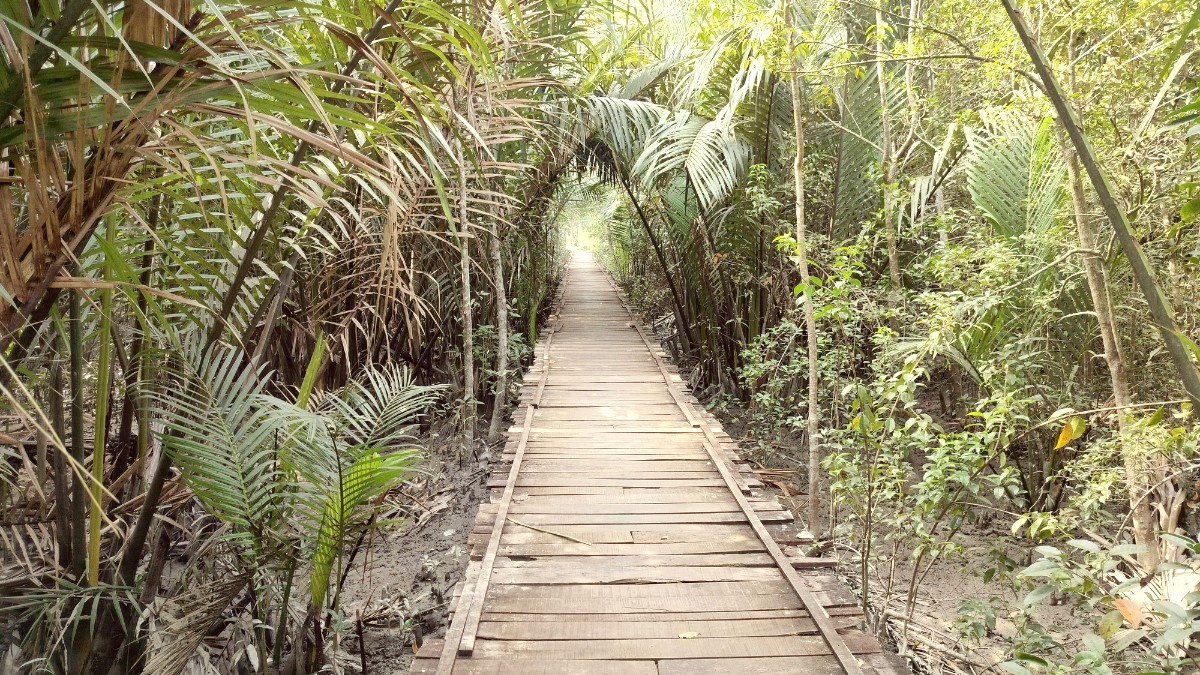
Bangladesh
Public transportation systems in Bangladesh are diverse, varying significantly between large cities and rural areas. For your Sundarbans trip, you will mainly encounter public transport in cities like Dhaka and Khulna. Within the Sundarbans, "public transport" is exclusively by boat.
This consists of the tour boats themselves and smaller dinghies used for canal excursions. You do not find traditional public buses or trains within the forest. Route maps and important hubs are often less formalized than in Western countries.
Traditional metered taxis are rare outside Dhaka. Better to use ride-sharing apps or negotiate fares with auto-rickshaws for reliability.
Pathao (motorcycles/cars) and Uber (cars) are popular in major cities like Dhaka and Khulna. Download and set up these apps before your arrival for ease of use.
Auto-rickshaw fares are negotiable (BDT 50-150 for short rides). Payment is always in cash. Bargaining is common and expected; agree on the price before starting the journey.
Self-drive car rentals are rare and not recommended for tourists due to challenging roads.
Not widely available or recommended for tourists due to traffic and road conditions.
Very limited in cities, and not a practical way to explore the Sundarbans.
Boats and launches are the essential "vehicles" for exploring the Sundarbans, typically part of tour packages.
Pedestrian-friendly areas are limited in cities like Khulna and Mongla. Sidewalks can be uneven, narrow, or non-existent. Within the Sundarbans, walking is restricted to specific, designated tourist spots, like areas around watchtowers.
Ride-sharing apps are generally safer due to driver tracking and fixed fares. Always verify car and driver details match the app.
Cycle rickshaws are safe for short distances in less congested areas. Negotiate the fare before starting.
Always follow your guide's instructions precisely during forest walks in the Sundarbans for safety from wildlife.
While in the Sundarbans, your accommodation is typically on a tour boat. These vessels vary in comfort, from basic to more luxurious. In gateway cities like Khulna or Mongla, you'll find a range of hotels and guesthouses. This section offers guidance on choosing your stay.
Meals are included in tour packages and feature fresh, local Bangladeshi cuisine, often with fresh fish from the delta.
Dietary restrictions should be communicated in advance.
In Khulna, a variety of local eateries and mid-range restaurants offer diverse Bengali dishes. Street food is also plentiful.
Exercise caution with street food hygiene.
Larger hotels in Khulna might feature international cuisine or more upscale dining experiences.
These options typically carry higher prices.
A typical Sundarbans tour is 3 days/2 nights, giving a good immersion into the forest. Longer or shorter trips might be available depending on the operator. Plan your itinerary around the best times to visit for optimal wildlife viewing.
Tours designed for maximum wildlife spotting, often prioritizing quieter channels and prime observation times.
Tailored trips for photographers, with focus on light, composition, and patient waiting for the perfect shot.
Some tours might include visits to local villages on the forest fringes, offering cultural interaction.
Your journey to the Sundarbans is a rare opportunity to connect with a thriving, untamed wilderness. Embrace the experience with an open mind and a sense of adventure.
The quiet majesty of the forest and its unique ecosystem will leave a lasting impression.